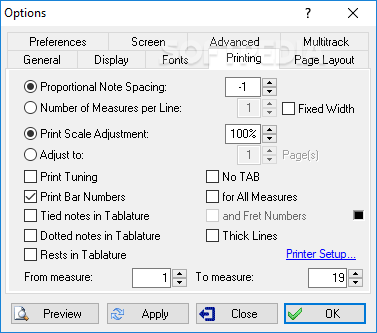
just enough to demonstrate the chord progression with the melody floating by.

On the guitar, it seems to work much better in C, without a capo. I know from John's "How To" DVD with Homespun, that he plays it both in G and C, depending on what suits him. I've never tried to play along WITH John Hartford on this great tune, but I've worked this tune out in G and in C on the banjo numerous times. What A Friend We Have In Jesus - Joseph M. later, that voice becomes a church organ to put it in the background a little bit, while the guitar steps out to dress-up the tune. I have this set up as a Fakebook arrangement, meaning the melody is on top in a harmonica voice to replicate a singer. that seemed out of place for an old gospel tune, instead, the lead guitar adds the country charm of various types of flat picked riffage to add background and ambience to the tune. Thee idea here is not to play the melody in hot-rod style. Last time through, the lead guitar repeats the arpeggiated licks part again. Third time through, the lead guitar plays scale oriented BG riffs, which take different forms. The second time, the lead guitar kicks in playing back-up in the form of arpeggiated licks. I started the arrangement out with melody only, the first time through. 4.0: 5 string banjo tablature for Sebe.One of my students requested this tune for flat picked guitar. 4.0: 5 string banjo tablature for Sebelius 4 - Dan Graper, 27 Sep 04:18AM

Is this at all what you are attempting? If I am way off here, someone come rescue me. How is the chromatic octave laid out on dulcimer? That is assuming that "0" is the open string and "7" is the octave, but I'm not a dulcimer player. You would have to think in terms of halfsteps above the open string and type the same number which would place a different character on the staff-eg when you type "3" or "4", you see "2" on the staff (for major or minor 3rd on the 2nd fret) AND when you type "5", you see "3"(for a P4th on the 3rd fret). I think you might be better off using special fonts where you have properly dislocated "number" glyphs. Whew! If you're trying to get Sibelius to do tab for diatonic fret spacing, that should be interesting. Posted by Steve Horn - 27 Sep 11:20AM (edited 27 Sep 11:21AM) That way you don't look like you're playing a harpsichord piece :). You can hide the trill lines by selecting them and hit Ctrl/Shift/H. This is a little difficult but enables you to fix the playback. If you have a lot of fretted fifth string notes, you can do this all at once by selecting them all-hold the CTRL key while you click each note, and apply the above procedure only one time. The note still sounds the wrong pitch when you select it but it will playback correctly when you listen to your music. Also, check the box "Start on upper note". For Speed, set to Zero or Zed of you're English. For "Half Steps" set the value to -5 for the five missing frets so to speak.

In the Playback panel of the Properties Palette, you'll see next to "Trill", two check boxes. Posted by Daniel Spreadbury - 27 Sep 08:15AMĪ workaround for fretted notes on the fifth string is to select the note and add a trill by going to the Lines Menu (CTRL/L). 4.0: 5 string banjo tablature for Sebelius 4 Has anyone encountered this problem and do you have a workaround? Sebelius actually prints the tab better than Finale but Finale does not have this problem playing back banjo tab correctly.
#Tabledit upper voice upgrade
Sadly, I purchased Sebelius with the competitive upgrade being a Finale user for years. To make matters worse, if you attempt to adjust the individual ‘g’ string to accommodate individual tuning, you screw up the open ‘g’ string. This means that a “1” on the ‘g’ string plays back as a g# ( this note does not exist on 5 string banjo) and the g# that should be “6” on ‘g’ plays c# instead of g#. Since Sibelius assumes that a banjo is just like a guitar tuned like banjo ( a bad assumption) it allows you to tab notate frets 1 through 5. The 5th string machine head begins at the 5th fret so for this string, you should only be able to show tab for frets 6 and above. By design of the instrument and accepted banjo tablature convention, you should not be able to play frets 1 through 5 on the 5th string. Any tab note defined on the 5th string (the 'g' of gDGBD)other than the open string plays back incorrectly. When I attempted to play back the banjo tablature, I found that there is a bug in the software. I wanted to transcribe in standard notation and also gDGBD banjo tablature. I purchased Sebelius specifically to use for 5 string banjo transcriptions. I just purchased and registered my copy of Sebelius 4 and I am profoundly disappointed.


 0 kommentar(er)
0 kommentar(er)
